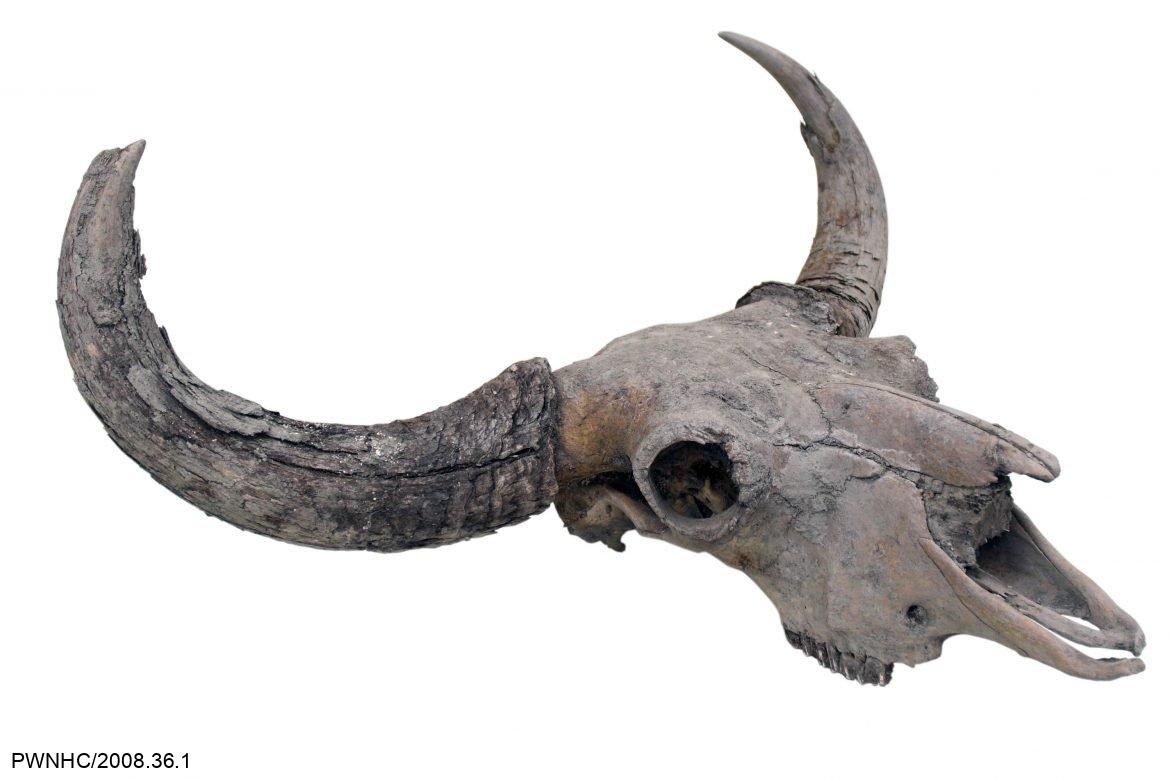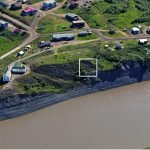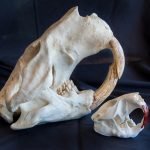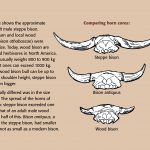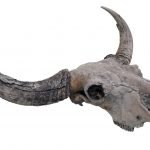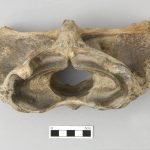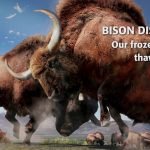13,650 Years Ago
Steppe Bison
In September of 2007, Tsiigehtchic resident Shane Van Loon discovered animal remains unlike any he had seen before, eroding from the side of a hill beside the Arctic Red River.
The remains were from a steppe bison, which became extinct at the end of the last Ice Age about 10,000 years ago. Steppe bison lived in an ecosystem that no longer exists in the North. The ecosystem was a vast grassland, or ‘steppe’ – the relationship between steppe vegetation and large ice age mammals has led scientists to call this environment the Mammoth Steppe – thus the name of the bison.
Steppe bison were much larger relatives of modern bison (see insert), the Tsiigehtchic steppe bison has a horn-span of about 1 meter across. In addition to being the first undisturbed discovery of a steppe bison in the Northwest Territories (NWT), the remains are exciting because they were well-preserved by the permafrost of the area, and include soft tissues that are not often intact in remains of that age.
Archaeologists from the Prince of Wales Northern Heritage Centre (PWNHC) brought the frozen bison remains to the local hospital, where staff were very helpful by x-raying various sections. They even let the team use the CT scanner. In this way, they were able to see into the remains while keeping them frozen. Keeping the remains frozen until adequately preserved by a conservator is very important. The archaeologists were looking for spear points or other signs of cause of death, but evidence of hunting was not found.
The warming temperatures that marked the end of the ice age led to worldwide ecosystem change and extinction of many animals of the Mammoth Steppe. In North America, many animals became extinct including all species of horse, camel and sloth. Woolly mammoths, mastodons, American lions, and giant beavers also disappeared; however, some species like the bison and beaver, survived in smaller forms and others like caribou and moose survived mostly unchanged. Sadly, caribou are going through another extinction episode now, linked to another period of climate change.
While the giant animals may have disappeared the stories of when they roamed the North are prevalent today in Indigenous oral traditions. (See origin stories for giant beaver stories).
Gwich’in story – Mouse Kills the Mammoth
As told by Wm. Nerysoo (n.d.)
In this story, a young man seeks advice from his father-in-law on where to find the materials to make arrows. The father-in-law, who is secretly planning the demise of the young man, sends him to the land of the great beasts to find bones for making arrowheads. Faced with killing a mammoth, the young man asks a mouse for help, saying, “Little mouse, you run up that big animals’ back leg. Go in his rectum and chew along his spinal cord till you come to the main heart vein. You will get lots of food.” The little mouse does this and kills the mammoth. To this day, you can still see tiny mouse tracks on the backbones of big animals.
After facing more challenges to collect arrow shafts and feathers, the young man makes an arrow and uses it to kill the evil father-in-law.
